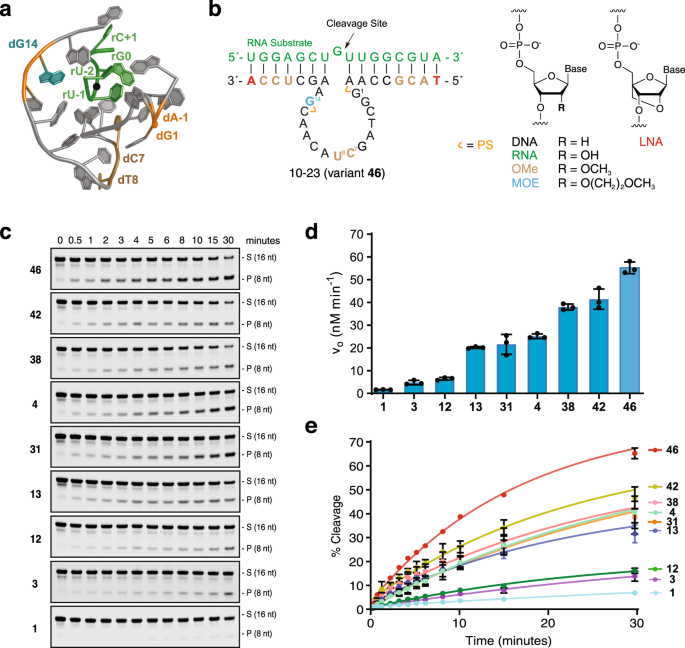2023-05-08 カリフォルニア大学校アーバイン校(UCI)
◆この画期的な「遺伝子サイレンシング」技術は、がん、感染症、神経障害の治療にDNAzymeの開発に革命をもたらす可能性がある。この研究は、Nature Communicationsのオンラインジャーナルで最近公開された。
<関連情報>
- https://news.uci.edu/2023/05/08/uc-irvine-scientists-develop-gene-silencing-dna-enzyme-that-can-target-a-single-molecule/
- https://www.nature.com/articles/s41467-023-38100-9
対立遺伝子特異的な遺伝子サイレンシング活性を有する自律型DNA酵素の化学進化 Chemical evolution of an autonomous DNAzyme with allele-specific gene silencing activity
Kim Nguyen,Turnee N. Malik & John C. Chaput
Nature Communications Published:27 April 2023
DOI:https://doi.org/10.1038/s41467-023-38100-9

Abstract
Low activity has been the primary obstacle impeding the use of DNA enzymes (DNAzymes) as gene silencing agents in clinical applications. Here we describe the chemical evolution of a DNAzyme with strong catalytic activity under near physiological conditions. The enzyme achieves ~65 turnovers in 30 minutes, a feat only previously witnessed by the unmodified parent sequence under forcing conditions of elevated Mg2+ and pH. Structural constraints imposed by the chemical modifications drive catalysis toward a highly preferred UGUD motif (cut site underlined) that was validated by positive and negative predictions. Biochemical assays support an autonomous RNA cleavage mechanism independent of RNase H1 engagement. Consistent with its strong catalytic activity, the enzyme exhibits persistent allele-specific knock-down of an endogenous mRNA encoding an undruggable oncogenic KRAS target. Together, these results demonstrate that chemical evolution offers a powerful approach for discovering new chemotype combinations that can imbue DNAzymes with the physicochemical properties necessary to support therapeutic applications.

